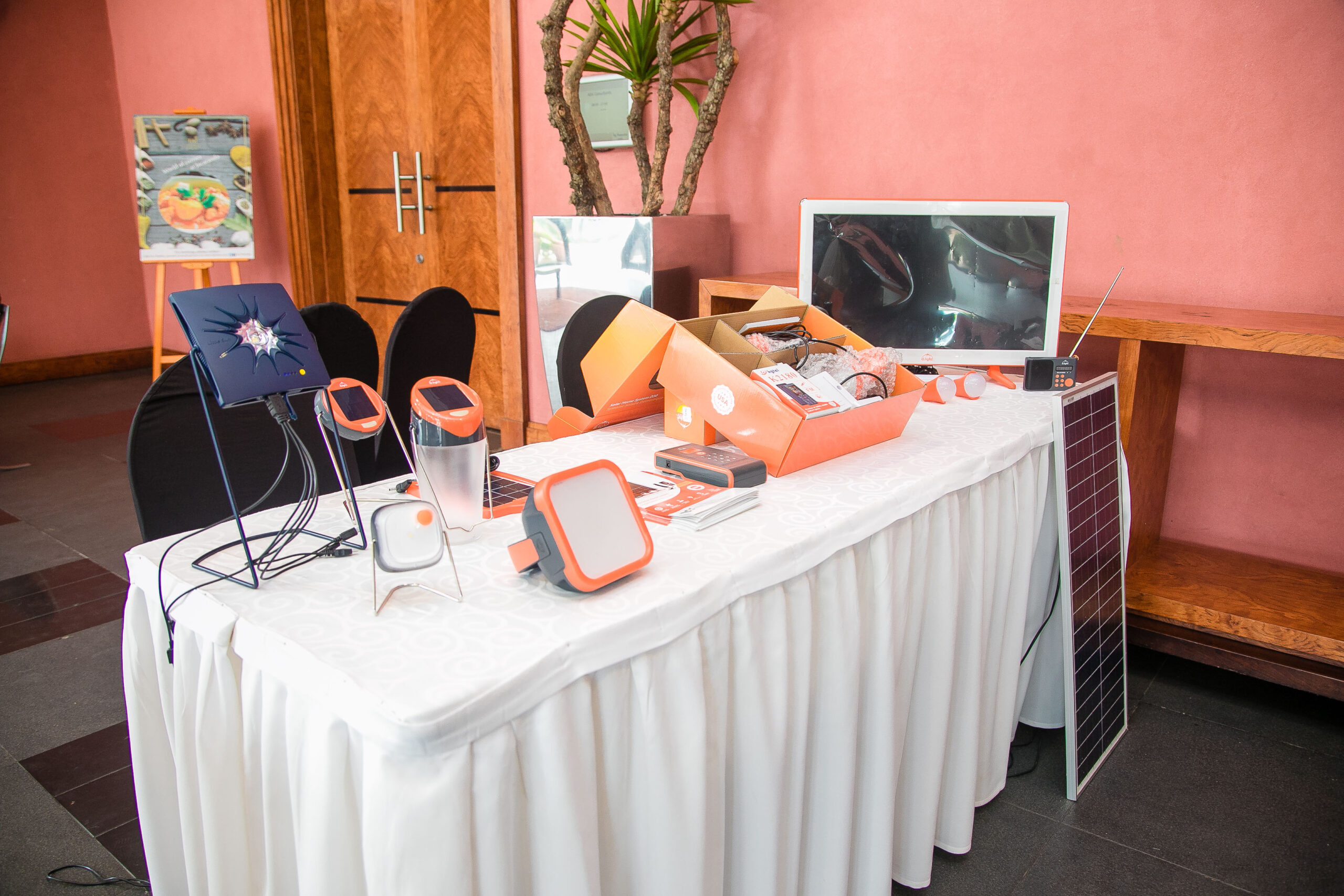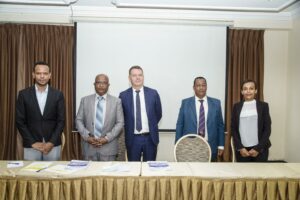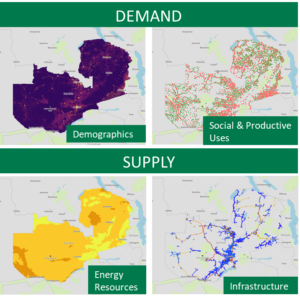Over the last five years, the SAS sector attracted some financing with USD 227 million invested in Nigeria, USD 43 million in Sierra Leone and USD 34.5 million in Ethiopia through the Market Development Credit Line.
Solar has been hailed as one of the breakthrough solutions that will drive economic development in Africa. Experts have identified stand-alone solar as a cost-effective solution to the electrification challenges in Sub-Saharan Africa (SSA) where 548 million people still live without electricity[1]. In recognition of this, governments in countries like Ghana, Ethiopia, Kenya, Nigeria, Zambia and Malawi have added solar home systems (SHS) to their national electrification plans. Some of these governments have gone ahead to roll out programmes like the Solar Naija that aims to reach 5 million people with SHS and promote local assembly for the same.
The largest addressable markets for SHS in SSA are found in Nigeria and Ethiopia where 77 million and 60 million people respectively, do not have access to electricity. Other significant markets are found in Tanzania – 35 million people and Uganda – 32 million people, who lack electricity[2]. The total unelectrified population for Malawi, Mozambique, Zambia and Zimbabwe stands at 51 million people.
Despite these prospects, the stand-alone solar sector, like all other sectors, was affected by the Covid-19 pandemic. Sales for SHS in different SSA countries dropped by 28% – 49% between December 2019 and June 2020. In Senegal, the decrease was mainly on cash sales while pay-as-you-go (PAYG) remained stable. Due to measures put in place to contain the pandemic, economic activity in SSA was projected to decline by 3.3% in 2020. The World Bank estimates that 40 million people are likely to slide into extreme poverty in Africa[3]. This means the progress that had been made with energy access in the continent will be affected and the number of people who cannot afford SAS will increase. Consequently, governments, investors, and development partners need to collaborate to address the affordability constraints for consumers and avail relief funding for SAS companies[4],[5].
But all is not lost, there are emerging business models that distributors are using to enhance affordability of SAS[6]. In Somalia, one company is piloting a micro-financing method by which a three-way agreement is made between the company, a remittances shop and a customer[7]. The customer agrees to buy an SAS system from the supplier and authorizes the remittances shop owner (who knows both) to withhold a portion of monthly remittances to be sent to the supplier. Each month the shop owner withholds an agreed amount, takes a small fee and pays the SAS supplier the remainder. This is a rare and innovative form of PAYG that could, with the right support, be enhanced and applied across larger markets. In Malawi, FINCOOP Savings and Credit Cooperative has a green loan programme that is increasing energy access to low-income households and women. The loans are structured in such a way that multiple payment methods can be used and accommodate longer repayment periods. MoneyMart Finance in Zimbabwe offers low-income informal sector loans with weekly or monthly repayments matched to the cashflow of microbusinesses.
Over the last five years, the SAS sector attracted some financing with USD 227 million invested in Nigeria, USD 43 million in Sierra Leone and USD 34.5 million in Ethiopia through the Market Development Credit Line. However, this financing is significantly low compared to the investment required for SAS to adequately contribute to universal electrification in these countries. For instance, Ethiopia requires USD 1.76 billion for 9.2 million SHS connections included in the country’s National Electrification Programme. Nigeria has a funding gap of USD 1.5 billion, while the figure stands at USD 204 million in Sierra Leone[8]. However, across SSA, local entrepreneurs are not accessing the available funding and more local currency debt facilities are needed to serve them. Other countries like Tanzania, Uganda and Senegal have funding facilities that only very few or no SAS companies have been able to access. The funds need to be re-structured if they are to adequately respond to the existing financing needs.
A key challenge facing the sector is the prevalence of low-quality SAS leading to market spoilage. The Africa Clean Energy Technical Assistance Facility (ACE TAF) has been working with the national standards organizations to address this. Countries like Ethiopia, Ghana, Kenya, Nigeria, Rwanda, Tanzania and Zambia already have quality standards in place. From the enforcement side of things, the Lighting Global Programme has supported the establishment of testing laboratories in Ethiopia, Kenya, Nigeria and Tanzania, with another one coming up in Zambia[9]. Many governments are also keen to understand how tax exemptions drive universal electricity access, if exemptions are worth the forgone revenues, and whether they benefit consumers. In Sierra Leone and Ethiopia, tax exemptions are applicable for solar products that meet quality standards. In Kenya, the Finance Act 2020 re-introduced 16% VAT and 25% import duty for solar panels and batteries, a major setback for the most advanced SAS market on the continent.
Solar appliances are also gaining ground in SSA. These appliances are acting as enablers for agriculture, health, education, information access and small businesses. Between January – June 2020 a total of 477, 000 solar appliances were sold in SSA including televisions, fans, refrigeration units and solar pumps[10]. Televisions comprise 46% of all the appliances sold. Some of the areas where SAS is addressing national priorities include:
- Across Africa, SHS are being used to keep the lights on in urban areas where power cuts on the national grid are frequent.
- Serving the 4.7 million refugee population in Uganda
- Using solar appliances to stem illegal immigration and youth unemployment in Senegal
- Creating employment through assembly of SAS in countries like Rwanda and Nigeria where there is more potential for such activities to take-off in a relatively shorter period. In Ethiopia, assembly of SAS could be a key strategy to address the challenge of forex access.
- Nigeria, Sierra Leone, Uganda and Zambia have started the process of electrifying rural health centers with SAS and in so doing providing effective storage for vaccines and improving maternal and child health outcomes.
- In Zimbabwe donor programmes are improving the livelihoods of underserved communities through solarizing boreholes, health centers, irrigation and small businesses.
- A non-governmental organisastion in Tanzania is developing solar powered cycles mounted with freezers that small-scale traders can use to deliver fresh agricultural produce to the market.
The potential for solar energy to address pressing problems in Africa will increase as more innovations that use decentralized power are developed. It is therefore an opportune time for governments, companies and development actors to double down their efforts to support solar solutions and thereby herald a new ‘solar era’ for Africa.
[1] International Energy Agency (IEA) et al, Tracking SDG 7: The Energy Progress Report 2019, 23
[2] ACE TAF (2021) Stand-alone solar market updates
[3] World Bank (2020) The World Bank in Africa – Overview
[4] ACE TAF (2020) Demand-side subsidies in off-grid solar: a tool for achieving universal energy access and sustainable markets
[5] ACE TAF & GOGLA (2020) Covid-19 is slowing down universal access to energy: projections show
[6] ACE TAF (2020) Access to consumer finance for vulnerable groups: One-size-does-not-fit all
[7] ACE TAF (2021) Stand-alone solar market update: Somalia
[8] ACE TAF (2021) Stand-alone solar investment maps: Ethiopia, Nigeria, Sierra Leone
[9] IFC Lighting Global & ACE TAF (2020) Standards for stand-alone solar: Guidance for governments
[10] GOGLA (2020) Global off-grid solar market report: Semi-annual sales and impact data











April 1, 2023, 00:07
Öyle bir seveceksin ki, yüreğinden kimse ayıramayacak. Ve öyle birini seveceksin ki, seni gözleriyle bile aldatmayacak. – Can Yücel